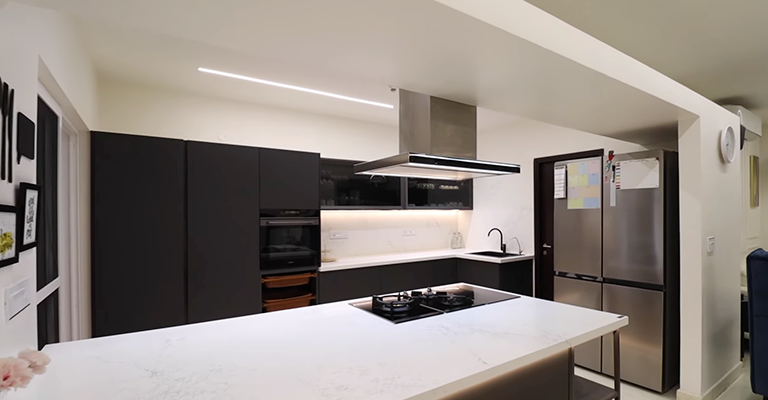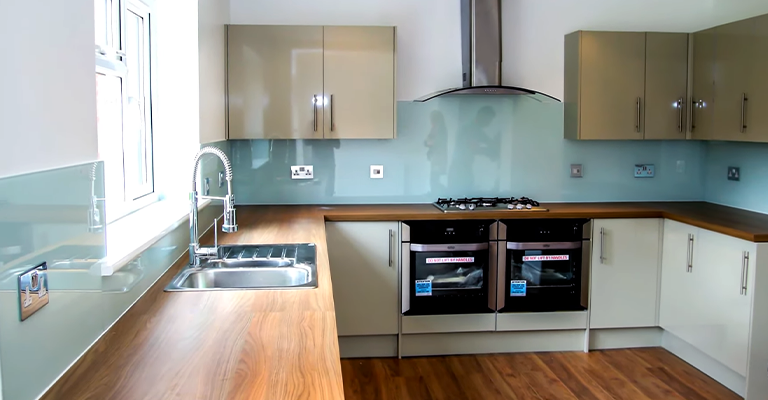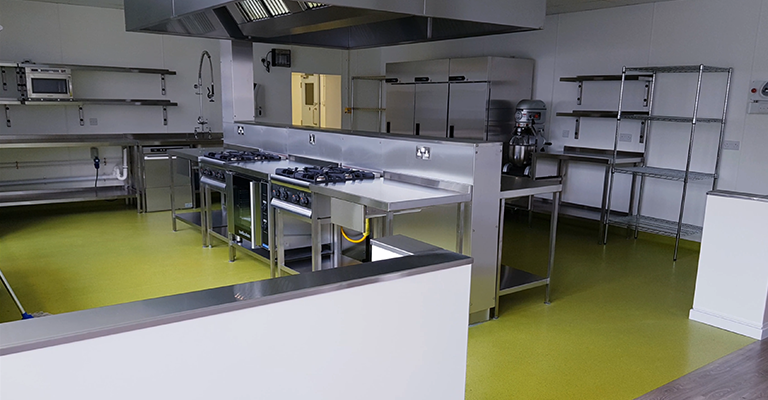What Is A Master Kitchen?-The Art and Functionality of a Master Kitchen
A master kitchen is the pinnacle of culinary craftsmanship, a space where functionality marries artistry in the realm of gastronomy.
It transcends the traditional kitchen, embodying a fusion of meticulous design, top-tier appliances, and tailored organization. This culinary sanctuary is characterized by its expansive layout, accommodating multiple chefs with ease.
More than a place for meal preparation, it’s a versatile hub for entertainment, work, and creative pursuits. Smart technology seamlessly integrates, enhancing efficiency and convenience.
A master kitchen isn’t just a room; it’s an ode to the culinary spirit, a focal point of the home where cooking is elevated to an art form, and every meal is a masterpiece.
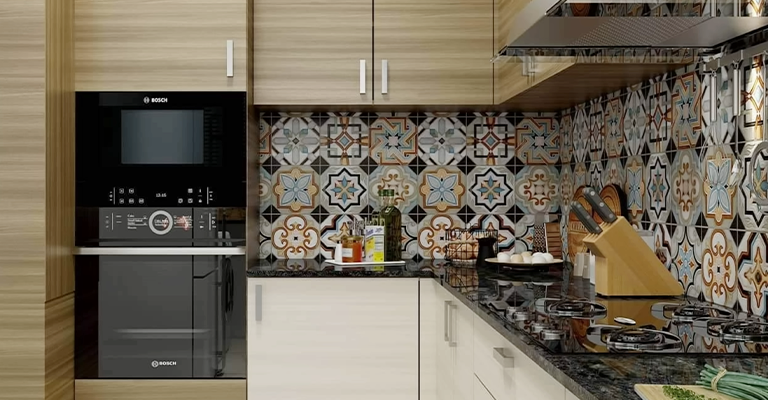
What Is A Master Kitchen?
A “master kitchen” is a term often used to describe a kitchen that is exceptionally well-designed, equipped, and organized to facilitate efficient and high-quality culinary activities.
It goes beyond the standard kitchen setup and incorporates features that are typically found in professional or commercial kitchens.
The concept of a master kitchen is gaining popularity in high-end homes and luxury properties where cooking and entertaining are considered significant aspects of daily life.
Here are some key characteristics and features associated with a master kitchen:
Ample Space
The generous space in a master kitchen allows for multiple chefs to work seamlessly, making it ideal for entertaining or hosting cooking events.
It ensures that there’s enough room to move around without any hindrance, promoting a smooth workflow.
Top-of-the-line Appliances
These kitchens often feature appliances from renowned brands known for their durability and advanced technology.
This might include professional-grade stoves with high BTU burners, convection ovens, commercial refrigeration units, and state-of-the-art dishwashers.
Storage Solutions
Customized storage solutions are meticulously planned to accommodate a wide range of kitchen tools and ingredients.
Deep drawers with built-in dividers, pull-out shelves, and spacious pantries with adjustable shelving are common features.
Specialized Workstations
These are designed to cater to specific culinary tasks. For example, a dedicated baking station may include a marble countertop with ample space for rolling out dough and cooling racks, while a butcher block station provides a sturdy surface for meat preparation.
Quality Materials and Finishes
Premium materials enhance the aesthetics and contribute to the longevity of the kitchen.
Natural stone countertops like granite or quartzite not only look stunning but are also incredibly durable and heat-resistant.
Advanced Ventilation and Lighting
A master kitchen prioritizes safety and comfort. Powerful ventilation systems, often equipped with professional-grade hoods, efficiently remove cooking odors and excess heat.
Additionally, well-planned lighting schemes ensure that every corner of the kitchen is well-illuminated, minimizing shadows and enhancing visibility.
Smart Technology Integration
Modern kitchens are equipped with smart technology, allowing homeowners to control appliances remotely.
For instance, ovens can be preheated from a smartphone, and refrigerators can alert you when you’re running low on certain items.
Aesthetic Considerations
Aesthetic choices are carefully curated to reflect the homeowner’s personal style.
This may involve selecting cabinetry with intricate detailing, choosing fixtures that complement the overall theme, and incorporating elements like backsplash tiles or accent lighting to create a cohesive look.
Entertaining Space
In addition to the functional cooking area, a master kitchen often includes a space for dining or entertaining.
This could be in the form of an expansive island with seating, a cozy breakfast nook, or an adjacent dining room with easy access for serving.
Professional Chef’s Tools
These kitchens may feature specialized equipment that serious cooking enthusiasts or professional chefs use.
This could range from precision scales and thermometers to specialized cookware and advanced appliances like sous-vide machines.
Accessibility and Ergonomics
Attention is paid to the placement of appliances, countertops, and storage to ensure that they are at convenient heights, minimizing strain and ensuring a comfortable cooking experience for individuals of varying heights.
Customization
A master kitchen is tailored to the homeowner’s specific needs and preferences.
This might include custom-designed storage solutions, unique fixtures, and personalized layouts that align with the owner’s cooking style and habits.
Importance of Design and Aesthetics
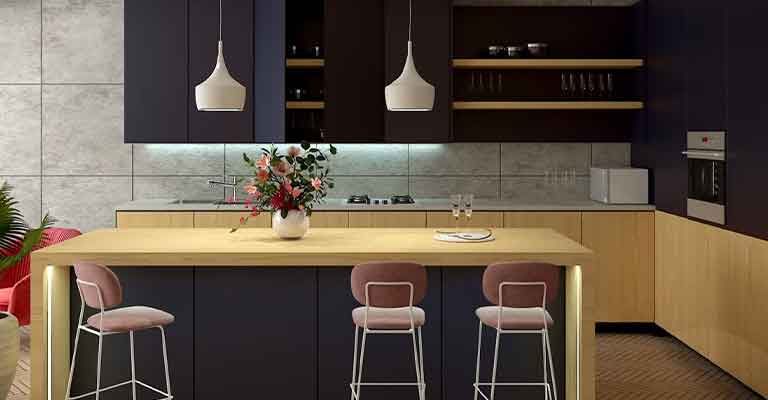
Design and aesthetics play a pivotal role in the concept of a master kitchen. While functionality and efficiency are paramount, the importance of design and aesthetics cannot be understated for several reasons:
Enhanced Pleasure and Comfort
A well-designed kitchen with appealing aesthetics can transform the cooking experience.
The beauty of the space, its harmony, and its warmth can make cooking and meal preparation more enjoyable and less of a chore.
Increased Home Value
Aesthetic design choices in a master kitchen can significantly increase the overall value of a home.
When done right, a beautifully designed kitchen can be a major selling point, attracting potential buyers and commanding higher prices.
Personal Expression
The design of a kitchen is an opportunity for homeowners to express their personal style and taste.
Whether it’s a sleek and modern design, a rustic and cozy feel, or a classic and timeless look, the kitchen’s aesthetics can reflect the homeowner’s personality.
Cohesive Interior Design
A well-designed kitchen that aligns with the overall interior design of the home creates a sense of continuity and flow.
Aesthetic choices should complement the style of the rest of the house, ensuring a harmonious living environment.
Functional Beauty
Aesthetics and functionality should go hand in hand. A well-designed kitchen maximizes the use of space, ensuring that everything has its place, and the overall layout enhances the cooking process.
The beauty of the design should not compromise the kitchen’s efficiency.
Positive Atmosphere
Aesthetically pleasing kitchens can foster a positive atmosphere.
Natural light, beautiful materials, and a well-thought-out color palette can create a welcoming and inviting space that promotes a sense of well-being.
Entertaining and Socializing
Master kitchens often serve as hubs for social gatherings and entertaining.
A beautiful kitchen design can enhance the overall atmosphere and make it a more attractive space for hosting friends and family.
Inspiration and Creativity
Aesthetically pleasing kitchens can be a source of inspiration for culinary creativity.
A visually stimulating environment can encourage homeowners to experiment with new recipes and cooking techniques.
Emotional Connection
A beautifully designed kitchen can create an emotional connection with the space.
It becomes more than just a place to cook; it becomes the heart of the home where memories are made and shared.
Longevity and Timelessness
A well-designed kitchen with timeless aesthetics can withstand changing trends and remain appealing for many years.
This means that homeowners can enjoy their kitchen’s beauty for a long time without feeling the need for constant renovations.
Multi-Functional Usage

Multi-functional usage in a space like a master kitchen refers to the ability of the area to serve various purposes beyond its primary function of meal preparation. This versatility is a key feature in modern kitchen design.
Here are some aspects of why multi-functional usage is important:
Efficient Use of Space
Multi-functional spaces make the most efficient use of available square footage.
They eliminate the need for separate rooms or areas dedicated to specific functions, maximizing the utility of the space.
Adaptability to Changing Needs
Homes evolve, and so do the needs of the residents. A multi-functional kitchen can adapt to changes in family dynamics, lifestyle, and interests without the need for extensive renovations or redesigns.
Encourages Flexibility
Flexibility in space usage allows for seamless transitions between activities.
For instance, a kitchen island can double as a workspace, dining area, or even a spot for casual conversations.
Promotes Social Interaction
Multi-functional spaces foster social interactions among family members and guests.
They create environments where people can engage in various activities while still being in the same space, promoting togetherness.
Increases Home Value
Homes with versatile, multi-functional spaces tend to have higher resale value.
Buyers are often attracted to homes that offer flexibility and adaptability, as it allows them to customize the space to their own preferences.
Maximizes Productivity
A multi-functional kitchen can enhance productivity by providing designated areas for tasks like cooking, working, studying, and more. This ensures that every part of various is utilized effectively.
Supports Various Hobbies and Interests
Homeowners have diverse interests and hobbies. A multi-functional kitchen can accommodate these activities, whether it’s arts and crafts, home-based businesses, or even DIY projects.
Facilitates Wellness and Health Activities
Modern kitchens are not only about cooking but also about promoting healthy lifestyles.
They can include areas for yoga, exercise, or even spaces for preparing specialized health foods like smoothies and salads.
Incorporates Technology Seamlessly
Multi-functional kitchens can integrate technology to enhance various activities.
This could include smart appliances, sound systems, and charging stations for devices used in different functions.
Streamlines Daily Routines
A well-designed multi-functional kitchen can make daily routines more efficient.
For example, a designated workstation can be used for meal planning, organizing, and managing household affairs.
Creates Zones for Different Activities
Through thoughtful design, a multi-functional kitchen can be divided into zones, each catering to a specific activity. This delineation helps in organizing tasks and keeps the space clutter-free.
Technology and Smart Kitchen Features
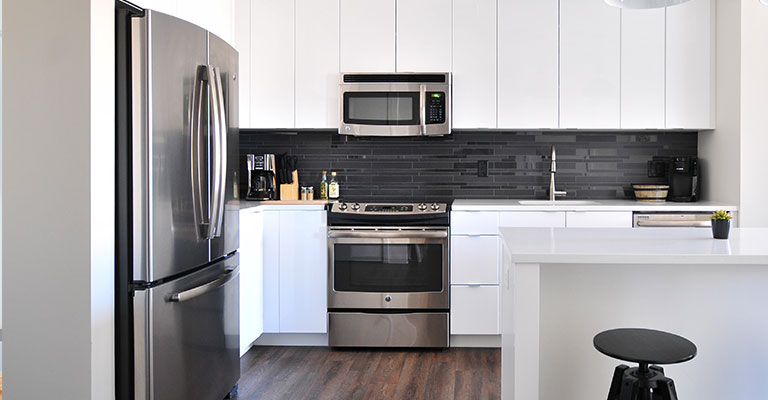
The integration of technology and smart features in a master kitchen has become increasingly prevalent, transforming the way we cook, interact with our kitchens, and manage our homes.
Here are some key aspects of technology and smart kitchen features in a modern kitchen:
Smart Appliances
Smart appliances, such as refrigerators, ovens, and dishwashers, can connect to your home’s Wi-Fi network, allowing you to control and monitor them remotely.
For example, you can preheat the oven on your way home from work or check if you’re out of milk using the refrigerator’s built-in camera.
Voice Control
Voice-activated assistants like Amazon’s Alexa, Google Assistant, and Apple’s Siri have made their way into the kitchen.
You can use voice commands to control appliances, set timers, find recipes, or even play music, all without touching anything.
Touchscreen Interfaces
Modern appliances often feature touchscreen interfaces that make it easy to select cooking settings, view recipes, and manage the appliance’s functions.
These interfaces can provide step-by-step cooking instructions and even suggest recipes based on available ingredients.
Refrigerator and Pantry Inventory Management
Some smart refrigerators and pantry systems can track your food inventory, send expiration date reminders, and even suggest recipes based on the ingredients you have on hand. This helps reduce food waste and simplifies meal planning.
Energy Efficiency and Home Automation
Smart kitchen technology can contribute to energy savings by optimizing appliance usage.
Additionally, kitchen appliances can be integrated into your home automation system, allowing for coordinated control of lighting, heating, and cooling.
Wearable Technology
Wearable devices, such as smartwatches, can be integrated with your kitchen’s smart systems.
You can receive alerts and control certain appliances right from your wrist, making it more convenient to manage tasks while cooking or entertaining.
Cooking Assistance
Smart kitchen devices like thermometers and scales can provide real-time feedback on cooking temperatures and weights.
They can even send alerts to your smartphone when your dish is ready, ensuring perfectly cooked meals.
Security and Safety
Smart kitchen technology extends to security and safety with features like smoke detectors, fire suppression systems, and cameras that can be accessed remotely. These technologies help protect your home and loved ones.
Recipe Apps and Guided Cooking
Apps and platforms offer a wealth of recipes and guided cooking experiences.
They provide step-by-step instructions, video demonstrations, and the ability to adjust serving sizes, making it easier to prepare complex dishes with confidence.
Waste Management
Smart waste management systems can help you recycle and compost efficiently, ensuring that you’re reducing your environmental footprint. These systems can even notify you when it’s time to take out the trash.
Entertainment and Connectivity
Smart kitchen features can provide entertainment options like streaming music, videos, or TV shows.
Integrated speakers and screens allow you to follow cooking tutorials or enjoy multimedia content.
Remote Monitoring and Alerts
Many smart kitchen systems can send alerts or notifications to your smartphone, allowing you to monitor your kitchen appliances and security systems while you’re away from home.
Difference Between a Kitchen and a Master Kitchen
A “kitchen” and a “master kitchen” differ in several key aspects, primarily in terms of design, features, and functionality.
Here are the main distinctions:
Size and Space
- Kitchen: A standard kitchen is typically a functional space for meal preparation. It may vary in size depending on the layout of the home, but it is designed primarily for basic cooking activities.
- Master Kitchen: A master kitchen is notably larger and more spacious. It is designed with ample room for multiple people to work comfortably, allowing for more complex cooking tasks and entertaining on a larger scale.
Appliances
- Kitchen: A standard kitchen typically includes standard household appliances like a stove, oven, refrigerator, dishwasher, and basic countertop appliances.
- Master Kitchen: A master kitchen often features high-end, professional-grade appliances. These may include commercial-grade stoves, ovens, refrigerators, and specialized cooking equipment.
Storage and Organization
- Kitchen: Storage solutions in a standard kitchen are designed for everyday use and may not be as extensive. They cater to basic kitchenware and pantry items.
- Master Kitchen: A master kitchen is equipped with extensive storage options. It includes specialized storage for a wide range of cookware, utensils, ingredients, and even space for specialized tools or equipment.
Design and Aesthetics
- Kitchen: While aesthetics are important in a standard kitchen, the design may focus more on practicality and space efficiency.
- Master Kitchen: A master kitchen places a high emphasis on both functionality and aesthetics. It often features premium materials, customized cabinetry, and a cohesive design that complements the overall style of the home.
Multi-Functional Usage
- Kitchen: While a standard kitchen can be used for basic cooking and meal preparation, it may not be designed to accommodate a wide range of activities beyond that.
- Master Kitchen: A master kitchen is designed with multi-functional usage in mind. It can serve as a hub for various activities including entertaining, working, studying, and even hobbies.
Technological Integration
- Kitchen: Standard kitchens may include basic kitchen appliances with standard features.
- Master Kitchen: A master kitchen often incorporates advanced technology and smart features. This can include appliances with remote control capabilities, voice-activated assistants, and other high-tech elements.
Entertaining Space
- Kitchen: A standard kitchen may not be designed to function as a dedicated entertaining space.
- Master Kitchen: A master kitchen is often equipped with features that facilitate entertaining, such as spacious islands with seating, adjacent dining areas, and integrated technology for socializing.
FAQs
What is a master kitchen?
A master kitchen is an exceptionally well-designed and equipped kitchen, often found in high-end homes.
Can a master kitchen serve as an entertainment space?
Yes, a master kitchen is versatile and can double as an entertainment hub.
Is a master kitchen designed for multi-functional use?
Yes, a master kitchen is designed to be multi-functional. It accommodates a range of activities beyond cooking.
What kind of appliances are found in a master kitchen?
A master kitchen typically features top-of-the-line, professional-grade appliances.
Can a master kitchen incorporate smart technology?
Yes, many master kitchens integrate smart technology.
To Recap
A master kitchen transcends the conventional boundaries of culinary spaces. It is a meticulously designed haven where culinary artistry meets functionality and aesthetics.
With its expansive layout, top-tier appliances, and tailored storage solutions, it redefines the cooking experience.
Beyond its culinary prowess, a master kitchen is a versatile domain, accommodating various activities from entertainment to work. The integration of cutting-edge technology amplifies its efficiency and convenience.
This culinary sanctuary reflects a commitment to gastronomic excellence and serves as the nucleus of a home, inviting creativity, social interaction, and lasting memories.
A master kitchen is more than a space; it’s an embodiment of culinary passion and lifestyle refinement.
